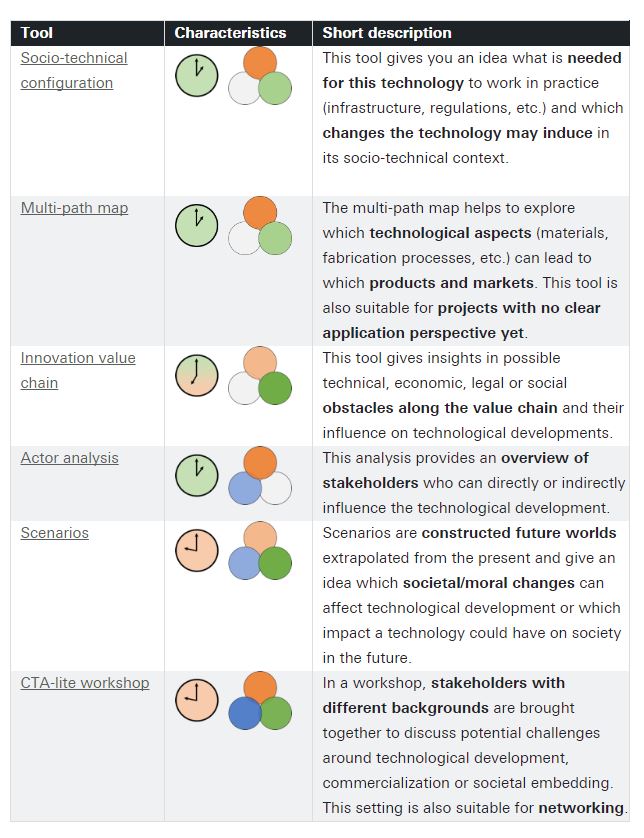A recently developed toolbox for Constructive Technology Assessment (CTA) makes it possible to consider certain aspects of research and innovation at an early stage. By integrating the economic, societal, ethical and legal aspects early in the development process the technological uptake and societal embedding will be increased. By using the CTA toolbox researchers are also capable of enriching and directing their own research. Furthermore, the alignment of scientific and technological advances with values, needs and expectations of society is stimulated in various research programmes, often labelled as Responsible Research and Innovation or Safe-by-Design. Not just researchers but also technology developers and engineers working in technical research projects can benefit from the toolbox. The CTA toolbox is developed by researcher Verena Schulze Greiving (University of Twente) within the NanoNextNL programme.
Relevant for researchers
The ‘toolbox’ is relevant for researchers interested in learning about socio-technical integration approaches and who want to integrate them in their work. This can for instance be:
- a PhD researcher or PostDoc
- a technology developer or an engineer
- a Bachelor or Master student focusing on a particular project or technology
- a senior researcher exploring the potential of a new research field.
Available tools
The tools have been selected because of their suitability to be integrated in laboratory practices and range from desk-top analyses to highly interactive settings such as a workshop. To identify tools of your interest, the CTA toolbox provides an overview with a short description and key characteristics of each component . All of the six available tools are supplied with a set of examples, practical considerations and implementation and literature.
Available tools in the CTA toolbox:
- Socio-technical configuration
- Multi-path map
- Innovation value chain
- Actor analysis
- Scenarios
- CTA-lite workshop
Read more
- Toolbox Constructive Technology Assessment: www.cta-toolbox.nl
- Publication in Nature Nanotechnology: article by Verena Schulze Greiving & Kornelia Konrad
- NanoNextNL research theme Risk Analysis and Technology Development






